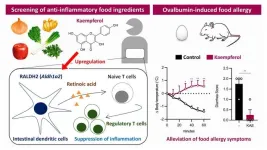In a recent study published in Volume 63, Issue 44 of the journal Inorganic Chemistry on September 11, 2024, a team of researchers led by Associate Professor Yoshihisa Hirota from Shibaura Institute of Technology (SIT) and Professor Seiji Komeda from Suzuka University of Medical Science, explored the potential of azolato-bridged dinuclear platinum(II) complexes (azolato-bridged complexes) in treating prostate cancer. The study particularly focused on a complex called 5-H-Y ([{cis-Pt(NH3)2}2(μ-OH)(μ-tetrazolato-N2,N3)](ClO4)2) as an alternative to cisplatin. These complexes are characterized by their water solubility and promising antiproliferative effects against prostate cancer cell lines, with minimal toxicity compared to traditional platinum-based drugs.
“The first platinum-based drug, cisplatin, has a powerful effect on cancer by binding to nuclear DNA, but it also affects normal cells and can cause serious side effects. We had data showing that some azolato-bridged complexes inhibit AR signaling, which is extremely important for prostate cancer proliferation, in addition to the anticancer effect initiated by the DNA-binding. Therefore, this study was conducted to clarify the mechanism of AR signaling inhibition by the azolato-bridged complex, 5-H-Y..,” explains Dr. Hirota.
The team used a variety of methods to evaluate AR dynamics and therapeutic effects in LNCaP prostate cancer cells. They utilized azolato-bridged complexes, cisplatin, and the AR antagonist KW-365 to explore their efficacy and performed cell viability, gene expression, and protein analyses. Additionally, the team employed immunofluorescence staining to visualize AR expression and evaluated apoptosis (programmed cell death), cell cycle distribution, and nuclear platinum accumulation.
The results showed that 5-H-Y exhibited significantly stronger cytotoxic effects than cisplatin, with a low half-maximal inhibitory concentration for dihydrotestosterone (DHT)-induced cell proliferation. Moreover, 5-H-Y effectively suppressed the expression of AR-responsive genes, such as PSA and TMPRSS2, and induced apoptosis in AR-overexpressing cells. Immunofluorescence analysis confirmed that 5-H-Y promoted chromatin fragmentation, a hallmark of apoptosis, with greater efficacy observed at higher concentrations.
Mechanistically, 5-H-Y was found to bind directly to AR and DNA through both noncovalent and covalent interactions. This binding induced conformational changes in AR, potentially disrupting its function. Additionally, 5-H-Y arrested cell cycle in the G2/M and sub-G1 phases, leading to apoptosis, particularly in AR-overexpressing cells. This multimodal mechanism of action distinguished 5-H-Y from cisplatin, which primarily targets DNA.
Despite its high antiproliferative activity, however, 5-H-Y demonstrated lower acute toxicity in vivo compared to other platinum complexes, making it a promising candidate for further development. “The azolato-bridged complexes used in this research are expected to play a key role in developing new treatments for advanced prostate cancer. For patients whose cancer has become resistant to conventional therapies, these complexes have the potential to effectively inhibit cancer progression with multi-layered attack while minimizing side effects. Our approach could thus expand treatment options for prostate cancer and improve the patient’s quality of life,” concludes Dr. Hirota enthusiastically.
Overall, the results suggest that dinuclear platinum(II) complexes could offer a more targeted approach to treating prostate cancer, specifically by inhibiting AR-mediated cell growth and survival, paving the way for the development of new, more effective therapies for advanced prostate cancer.
***
Reference
DOI: https://doi.org/10.1021/acs.inorgchem.4c01093
About Shibaura Institute of Technology (SIT), Japan
Shibaura Institute of Technology (SIT) is a private university with campuses in Tokyo and Saitama. Since the establishment of its predecessor, Tokyo Higher School of Industry and Commerce, in 1927, it has maintained “learning through practice” as its philosophy in the education of engineers. SIT was the only private science and engineering university selected for the Top Global University Project sponsored by the Ministry of Education, Culture, Sports, Science and Technology and had received support from the ministry for 10 years starting from the 2014 academic year. Its motto, “Nurturing engineers who learn from society and contribute to society,” reflects its mission of fostering scientists and engineers who can contribute to the sustainable growth of the world by exposing their over 9,500 students to culturally diverse environments, where they learn to cope, collaborate, and relate with fellow students from around the world.
Website: https://www.shibaura-it.ac.jp/en/
About Associate Professor Yoshihisa Hirota from SIT, Japan
Yoshihisa Hirota is an Associate Professor at the Shibaura Institute of Technology, affiliated with the Department of Bioscience and Engineering, College of Systems Engineering and Science. He holds a Ph.D. in Pharmaceutical Sciences from Kobe Pharmaceutical University and has conducted international research as a postdoctoral fellow in the U.S. (University of Cincinnati, School of Medicine). Dr. Hirota’s research focuses on Medicinal Science and Nutritional Biochemistry, with particular emphasis on the roles of fat-soluble vitamins and nucleic acids in biological systems. With 42 publications to his name, Dr. Hirota’s expertise bridges molecular biology, nutrition, with the goal of extending the healthy life expectancy of the world, he will continue to promote research into nutrients and medicine, and lead to better healthcare solutions.
About Professor Seiji Komeda from Suzuka University of Medical Science, Japan
Seiji Komeda is a Professor at the Faculty of Pharmaceutical Sciences at Suzuka University of Medical Science, with extensive expertise in coordination and bioinorganic chemistry. Holding a Ph.D. from Leiden University, his research focuses on the design and mechanistic studies of next-generation platinum-based anticancer drugs, exploring interactions between metal complexes and biomolecules. Dr. Komeda has significant international research experience, including postdoctoral fellowships in the U.S. (Virginia Commonwealth University, Georgia Institute of Technology) and France (Université René-Descartes). An accomplished scholar, Dr. Komeda has contributed 47 publications and was honored with the Lecture Award at the 4th Symposium on Biorelevant Chemistry.
Funding Information
This work was partly supported by the Japan Society for the Promotion of Science (KAKENHI Grant Numbers 19K07018, 23K06074, 18K11056, 21K11709, 24K14656, and Grant for the Promotion of Joint International Research 18KK0455).
END









